Trying a 6-Man Starting Rotation Would Help the Brewers
- Tim Muma
- Feb 10, 2016
- 6 min read
Over the years, a handful of clubs have temporarily gone to a 6-man starting rotation for various reasons: injury, scheduling, indecision, etc. Typically, players and managers are creatures of habit, so a 5-man rotation remains the norm, giving each hurler 4 days of rest.
There may be some merit in the 2016 Milwaukee Brewers adding a 6th starter to their regular set, particularly since winning isn't necessarily the biggest priority right now.
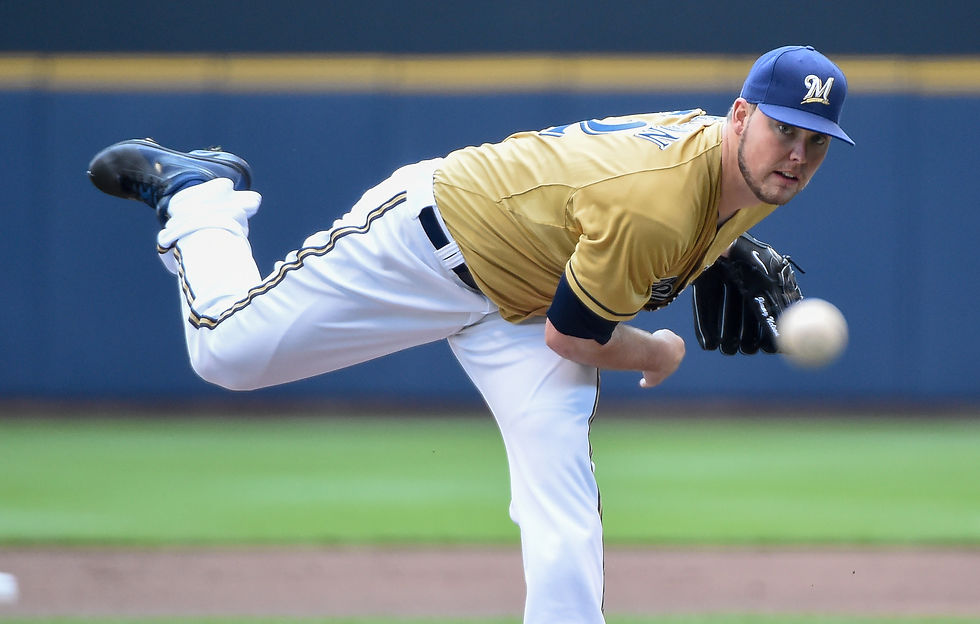
I'm not saying they SHOULD go off the beaten path with this, but I do think it's important to examine the potential benefits now and down the road. They already are set up to have a revolutionary bullpen if they'd like, so why not go completely anti-establishment?
Most of the arguments against using a 6-man rotation stems from the apparent struggles of the pitchers when they're bumped from their normal resting period. There has been some research to indicate a dip in performance when starters sit for 5 or more days.
However, once again, the Brewers shouldn't necessarily concern themselves with this small-sample influence because in the short term, development and growth trump results. In the long run, even by season's end, there is the potential for widespread value.
Even with early off days, if Milwaukee implements this from the get-go, the starters will be in the right mindset and prepared for something new. If ever there was a time to experiment for the Brewers, it's now. The other issue is where does that extra body come from? Since modern baseball teams often store 7 arms in the bullpen and 5 bench bats (in the National League), that means one less player from one of these groups.
In theory, any of the 6 six starters could throw an inning on their "bullpen day" and still be fine, so the argument is most logically made that a reliever would be kept in the minors. At the same time, plenty of clubs have gone to short benches for periods of time.
There are options in dealing with the 25-man roster, so that shouldn't deter the Brewers either.
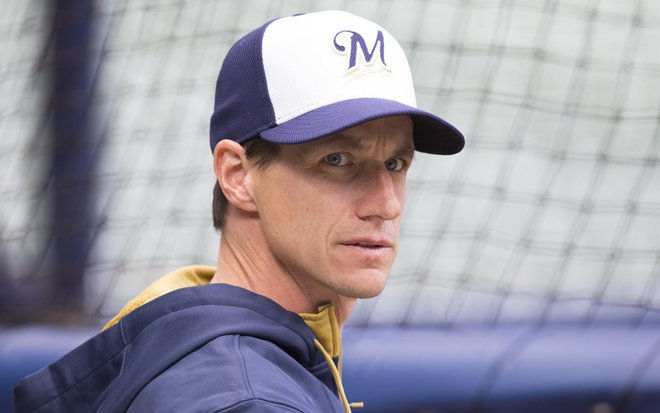
In trying to see the positive impact an additional starter can bring, there are 3 layers to peel back. Each of them are slightly different, but all present a benefit.
1) The Number of Major-League Ready Starters
Entering Spring Training, there are at least 6 or 7 starters who could conceivably be in the Brewers' starting rotation.
Matt Garza
Jimmy Nelson
Wily Peralta
Chase Anderson
Taylor Jungmann
Jorge Lopez
Zach Davies
Barring any strange or unfortunate circumstances, the first 5 on that list are essentially locked in. There are also other guys worth keeping an eye on who could take a step forward during camp.
As for the other two above, Zach Davies might be a bit of a stretch, but he's 23 and pitched well in 6 starts with the Brewers in 2015. In 34.1 innings, Davies had a 3.71 ERA (108 ERA+). His walks went up, but that may be a result of adjusting to MLB hitters laying off tough borderline pitches.
For Jorge Lopez, the 55th-ranked prospect in all of baseball by MLB Pipeline, you can argue he's ready to test his stuff at the big league level for a full season. A top 3 prospect for the Brewers, Lopez dominated double-A last season for the Biloxi Schuckers.
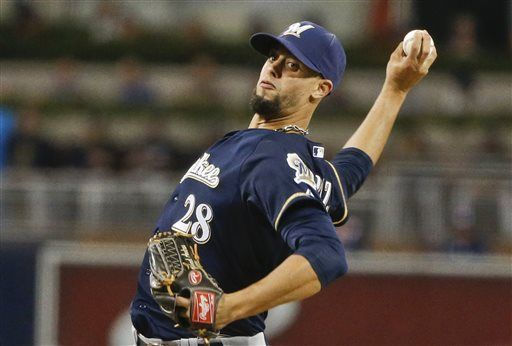
In 24 starts (143.1 IP), Lopez went 12-5 with a 2.26 ERA and 1.095 WHIP. He also struck out 8.6 batters per 9 innings. He only got 2 starts with the Brewers last year, so there wasn't much to read from his extremely limited opportunity.
His leap coincides with increased velocity up to 94-95 MPH with his fastball, greater development of his changeup as a plus pitch, and some progression with the curve. What needs to be determined is if will be if he's better served getting tested in Milwaukee or fine-tuning in the minors.
Of course, it's also likely that one or more of the starters suffer some sort of injury that creates holes, and then suddenly the numbers work themselves out At least to start the season, though, there's an argument to be made for some extra starts being spread around.
2) Pitching Deeper Into Games (Without Added Innings)
Last season, Brewers' starters tossed the 5th-fewest innings in baseball, averaging just over 5.5 frames per game. While relievers have taken on greater significance in baseball in recent years, there's still value in having starters consistently pitch into the 7th inning.
With the extra day of rest for each hurler, there should be some comfort and confidence in pushing them a bit further each time they take the hill. That's not to say Craig Counsell would be irresponsible and keep starters in for 130 pitches on a regular basis, but simply stretch more often to 110-115.
It's true that most starters lose effectiveness as they get through the order a 3rd time, but that's also based on the 5-man rotation model. Perhaps with one more day of strength built up, the gap is narrowed as the pitcher will have a little extra left in the tank.
It will be interesting how Counsell handles the younger starters especially, because if it's seen as a building and development type of season, then it's likely he will stick with a guy for a batter or two instead of going to the 'pen.
In these cases, it may be a test of the pitchers' resolve, competitiveness and ability to get the job done in whatever way they can.
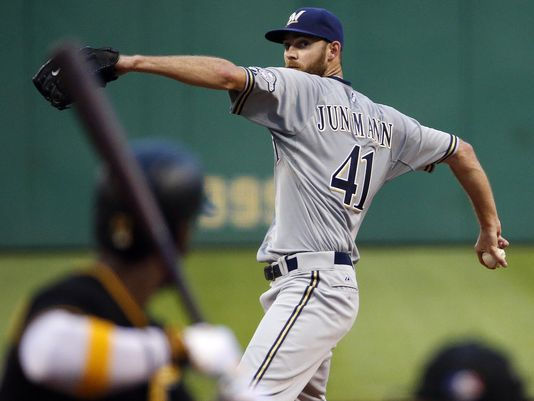
This complements the 6-man rotation as well. Giving starters another day off and pushing them in each outing allows for growth and maturity both mentally and physically, regardless of the outcome. It will prepare them well for a regular rotation again in 2017.
Also, despite the increase in their innings per start, the overall wear and tear on their arms will be basically the same.
With 32 starts in a 5-man rotation, at an average of 5.5 IP, each hurler would throw 176 frames during the year. A 6-man crew would net 27 starts, and if they're pushed to 6.5 IP, that would put them at 175.5 innings for the season.
The coaching staff would still have the option of shrinking down to 5 guys at any point if they felt the need to add innings for a starter. Beginning the year with 6 men gives them more flexibility.
3) Avoiding Matt Garza's $13 Million Option for 2018
It's unlikely GM David Stearns will be able to unload Garza's contract (barring a miracle Cy Young half), so the Brewers will just have to suffer through this year and 2017 watching a poor ROI. The big issue could come in 2018 if Garza accomplishes enough to get his $13 million option.
There are 3 parameters for Garza's option to vest, but the focus for this 6-man plan is the first qualifier: Garza must have 110 combined starts from 2014 through 2017.
After his first 2 seasons in Milwaukee, he has 52 starts to his name, which includes some missed time.
In a 5-man rotation, it's very possible Garza would acquire the additional 59 starts he needs to hit 110. He would need 29 starts per season, and in a 5-man rotation, the average comes out to 32 starts.
In the 6-man model, the average amount of starts would be 27 per year, putting him at 106 - just 4 shy of getting his $13 million. Considering his history, Garza will probably fail to make all of his starts due to injury, but the 5-man rotation gives him some wiggle room.
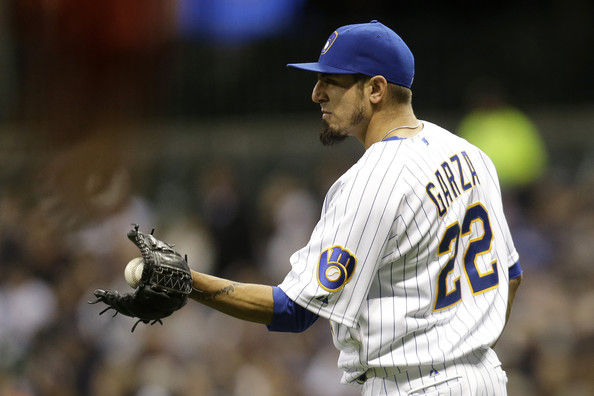
Garza's agent and the Players' Union would be chomping at the bit if they had some evidence the Brewers were artificially shaving starts off Garza's line.
If late in the year they decided he would pitch in relief (like last year) or if they chose to limit his starts in some way at the end of 2016 or 2017, there would definitely be a grievance filed.
However, if Milwaukee entered 2016 with the strategy of a 6-man rotation, focusing on evaluating their younger hurlers and developing them to go deeper in games, I don't think Garza would have a legitimate case.
With 2018 and 2019 being potential years for the Brewers to make a move, they'll want their finances set up ready to strike. I'm pretty sure the extra $13 million would come in handy.
--------------------------------------------------
So what do you think, is it worth a shot for Milwaukee to try a 6-man rotation at the outset of 2016?
The more I swirl it around in my head and look at the different angles...I sort of like it. Obviously, half of the starters could go down in March and it all becomes hot air.
Until then, it's worth some examination.

Comments